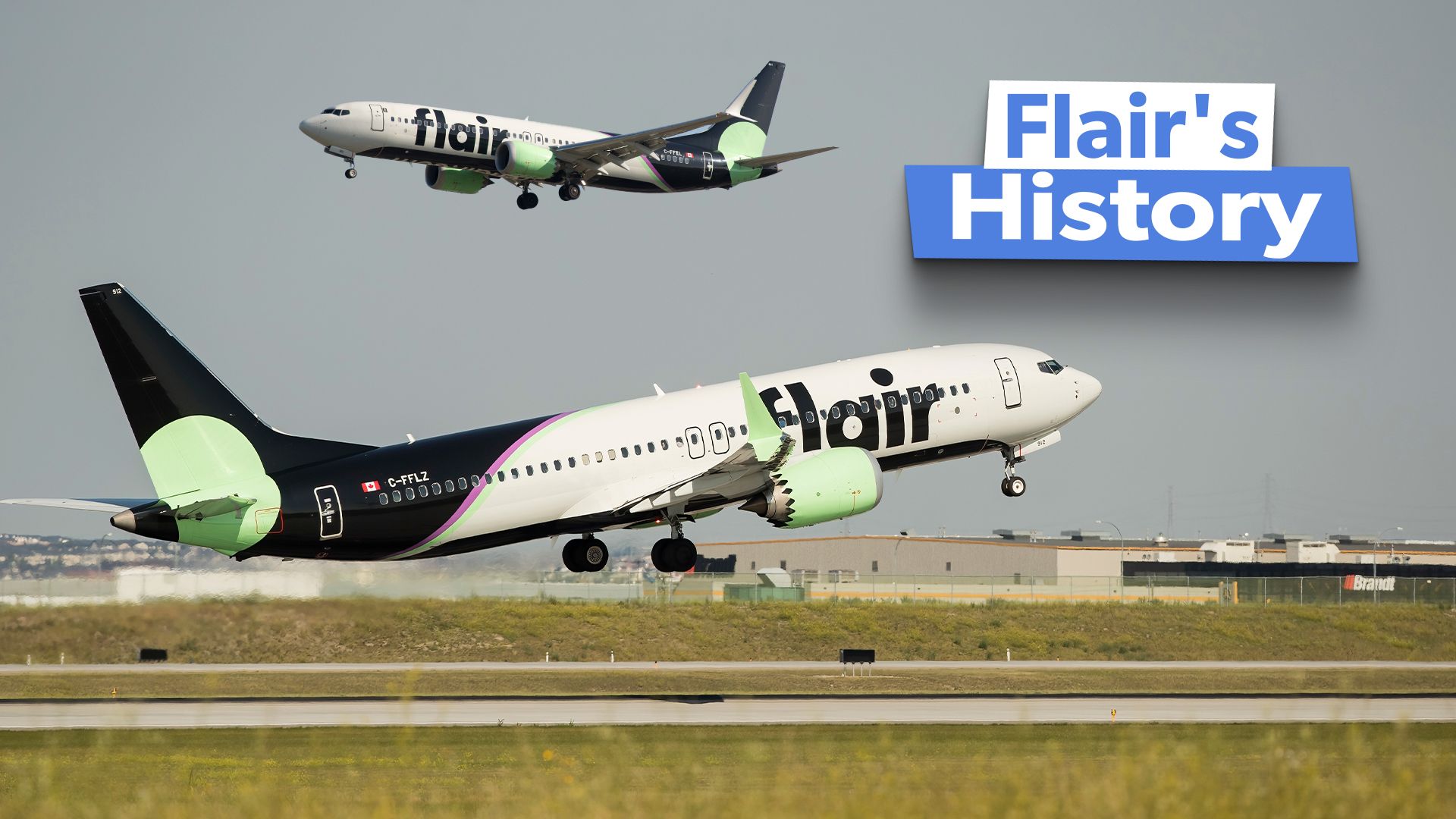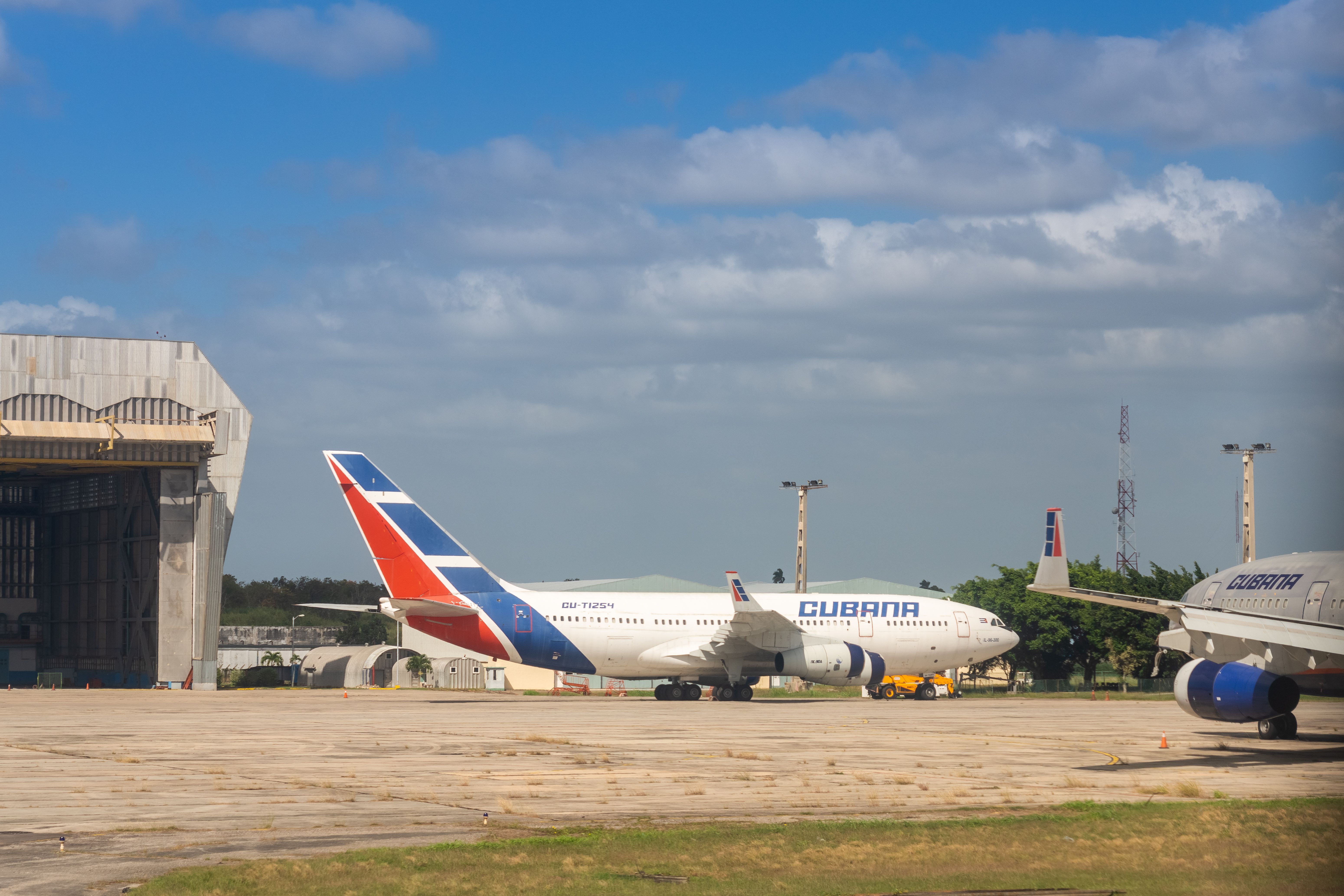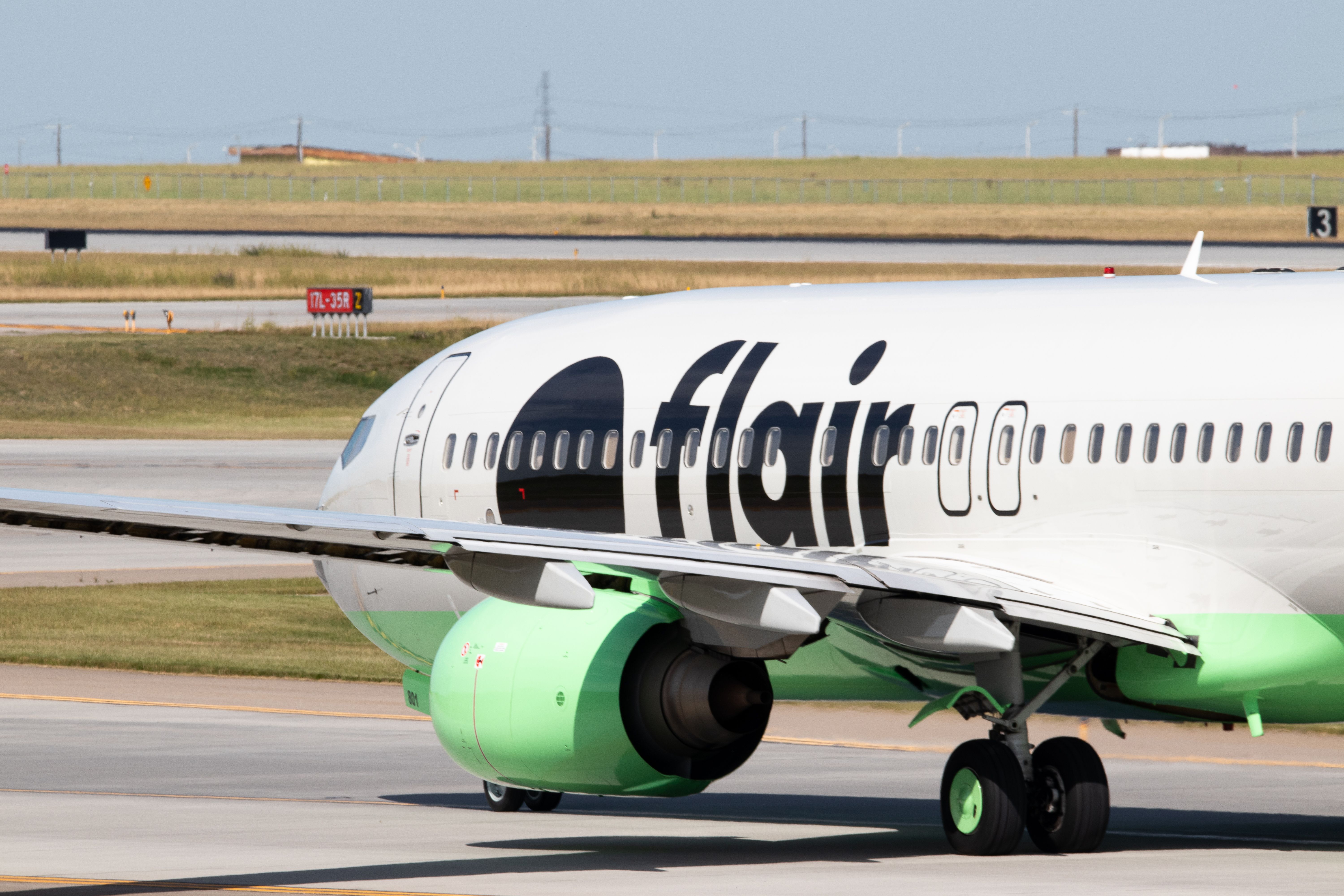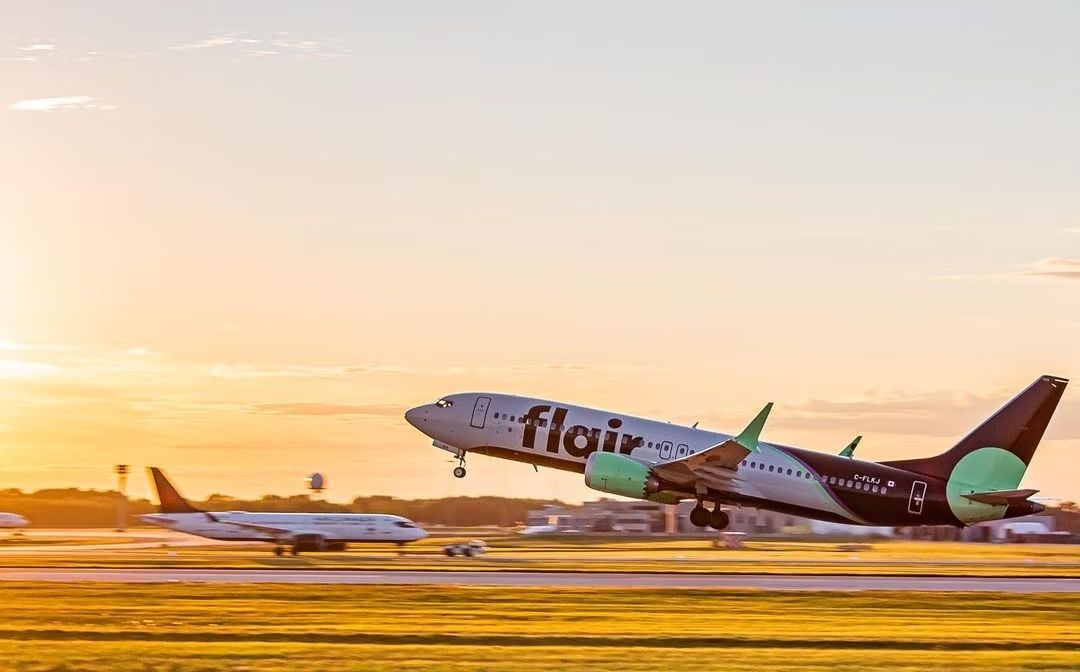Flair Airlines is an ultra-low-cost airline and one of Canada’s youngest commercial carriers.
When was the airline founded?
Though Flair is one of Canada’s youngest commercial carriers, its founding dates back to 2005, and the first flights operated in 2006 under the name Flair Air. The airline was originally founded as a charter carrier, operating throughout Canada and the United States. Since its inception, the airline has operated a fleet of Boeing aircraft.
Photo: EGT-1 | Shutterstock
Early on, Flair operated cargo services between Canada and Cuba on behalf of Cubana de Aviación. The airline began operating with Boeing 727s. Two years later, it shifted to Boeing 737-400s.
Switching to scheduled passenger services
For more than a decade after its launch, Flair operated charter services. As mentioned above, it started with cargo options, but it quickly branched out beyond that. According to a previous report from Skies Magazine, Flair transported more than 10,000 construction workers on a monthly basis from 2007 to 2010.
These workers were transported for Shell Canada, and in 2013, Flair signed a ten-year contract with Shell. This was a major deal as Shell Canada Aviation had operated for more than 60 years and the company chose to shut down the aviation operations. At the time, former president of Flair, Jim Rogers, said,
“We have enjoyed a productive and successful working relationship with Shell. This agreement will strengthen that relationship, and position us strategically in a way that will help us to continue to grow our business, both here in Kelowna and across Canada.”
Flair took over operating two aircraft that were previously in operation for Shell, a Dornier 328 and Embraer E175.
In 2017, Flair Air rebranded to the name it is known as today, Flair Airlines and began scheduled flights. This happened in conjunction with the acquisition of NewLeaf Travel.
Fleet changes
Flair first started operating Boeing 727 aircraft but two years later, it switched to the 737 family. By April 2018, the airline had gotten rid of the 727s and was operating seven 737-400s. With the shift to commercial operations, Flair had goals to grow its fleet by adding two 737-800s during the winter of 2018-2019 and have 13 planes by the end of the year.
At the time, Flair had not chosen a new aircraft type for its future operations. But, in January 2021, the airline ordered 13 Boeing 737 MAX 8s. With the order, the airline set a goal of a 50-aircraft fleet within half a decade.
Photo: sockagphoto | Shutterstock
According to data from ch-aviation, Flair is far from reaching its goal of 50 planes. As a matter of fact, it is not even halfway there. Today, the airline has 18 MAX 8s and two 737-800s. There are eight more MAX 8s that have yet to be delivered.
Current operations
According to data from Cirium, an aviation analytics firm, Flair scheduled 27,030 flights in 2024. This totals more than 5.1 million seats, a more than 200,000 reduction over 2023. Last year, Flair transported 4.5 million passengers and boasted an 86% load factor throughout the year.
Data shows that its busiest months are in the summer, specifically June, July, and August. In June, the airline had 2,621 scheduled flights, and July and August each had more than 2,800. By next month, that drops to 1,792.
Photo: Heather Dunbar | Shutterstock
Flair has operations in Canada, the United States, Mexico, Jamaica, and the Dominican Republic. Of its 2,081 flights in October, 1,675 are domestic and the remaining 406 are international. The busiest international route is to Fort Lauderdale-Hollywood International Airport (FLL) in South Florida. Flair operates daily flights to the secondary Miami-area airport.
The busiest route overall is from Vancouver International Airport (YVR) to
Calgary International Airport (YYC) with nearly three daily roundtrips. This month, there are more than 32,000 seats available between the two cities. From Vancouver to Toronto Pearson International Airport (YYZ), Flair has about 17 weekly roundtrips, amounting to nearly 28,000 seats.
This month, the route from Toronto to Fort Lauderdale is the busiest international route in Flair’s network. With daily flights, Flair has more than 11,000 seats available to FLL. The second-busiest route is also from Toronto, but to the popular Mexican destination of Cancun with about six weekly flights.
Photo: Flair Airlines
Two routes are tied for third place, one to John F. Kennedy International Airport (JFK) in New York and the other to Los Angeles International Airport (LAX). Each city has four weekly flights and just over 7,500 seats. Flair also operates international flights from Edmonton, Yellow Knife, Montreal, Vancouver, and Calgary.
Late last week, Flair announced its schedule for summer 2025. Service from Toronto to Vancouver will see a 71% increase on weekly operations, while Calgary-Toronto will have a 29% weekly increase. Maciej Wilk, Flair’s interim CEO, said,
“The new summer 2025 schedule is a fantastic opportunity for Flair and our passengers. By concentrating our resources on routes with the highest demand, we’re able to offer more frequent flights and better service between key cities. This allows us to focus on routes with the greatest demand, providing more affordable flight choices for Canadians. It’s a strategic move that maximizes our fleet’s efficiency, giving passengers more flexibility while reinforcing our commitment to accessible travel.”
Next summer, flights from Vancouver to Guadalajara will double, while operations from Toronto will see a 50% increase. Flair also plans to launch a new route from Calgary to Kelowna, which will operate four times weekly.





